Home>Garden Essentials>How Green Space Is Used
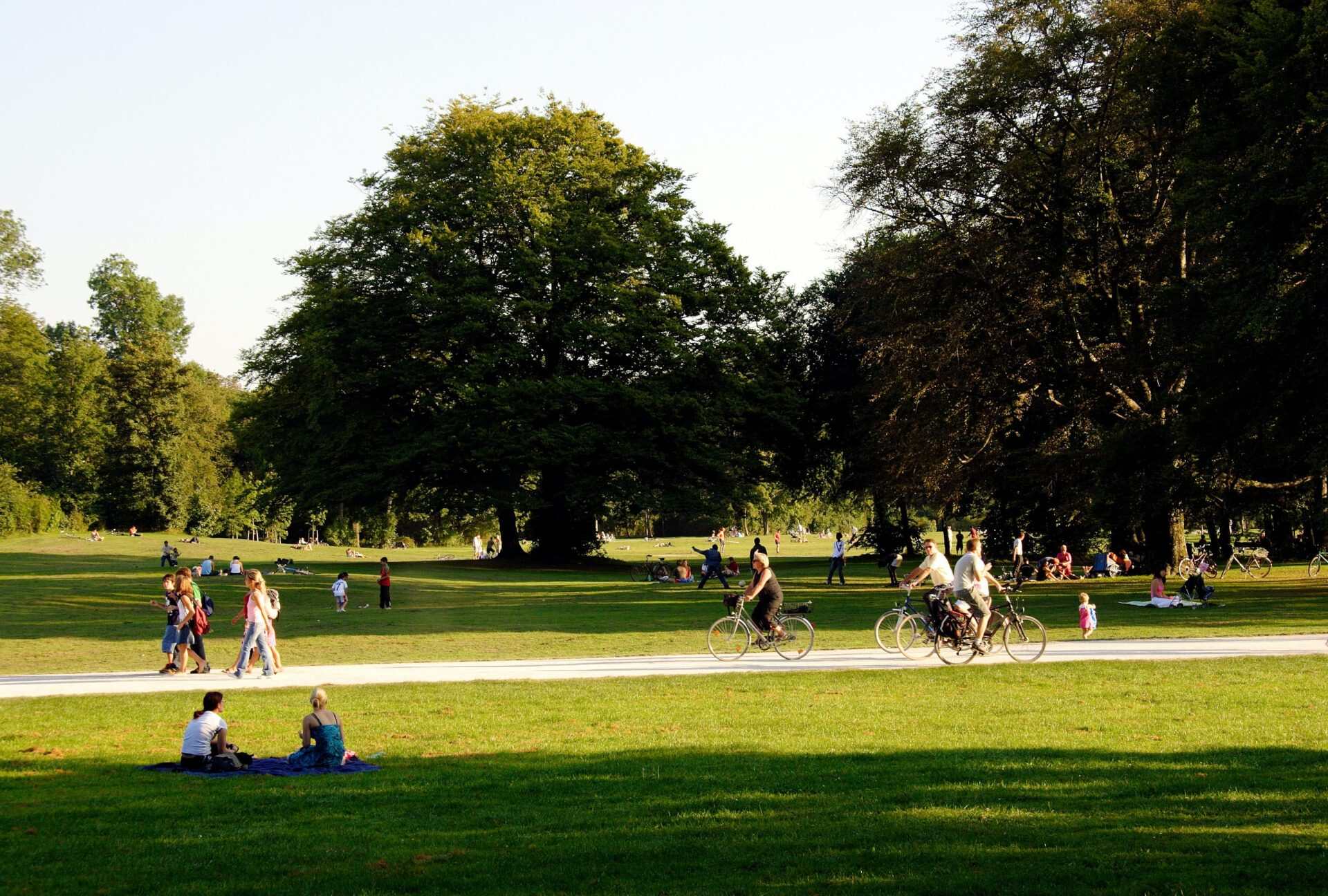

Garden Essentials
How Green Space Is Used
Modified: October 20, 2024
Discover how gardens are utilized in creating green spaces and how they contribute to environmental sustainability and overall well-being. Explore tips, benefits, and inspiration for creating your own garden oasis.
(Many of the links in this article redirect to a specific reviewed product. Your purchase of these products through affiliate links helps to generate commission for Storables.com, at no extra cost. Learn more)
Introduction
Welcome to the world of green spaces! In today’s concrete jungle, where skyscrapers dominate the skyline, the importance of incorporating green spaces into our urban environments cannot be overstated. Green spaces, such as parks, gardens, and even rooftop gardens, provide numerous benefits for both the environment and the well-being of individuals.
The concept of green spaces dates back centuries, where individuals sought solace and peace in nature. However, as our cities grew and expanded, green spaces began to dwindle. The realization of the detrimental effects of this loss has prompted a renewed focus on incorporating green spaces into urban planning.
Throughout history, green spaces have played a significant role in providing a place for leisure, relaxation, and recreation. But their importance goes beyond just aesthetic and recreational purposes. These spaces contribute to the overall health and well-being of communities, promote environmental sustainability, and foster social interaction.
This article will explore the different types of green spaces, the benefits they offer, and the challenges involved in their usage. Whether you’re a gardening enthusiast, an urban planner, or someone who simply appreciates the beauty of nature, this article will provide valuable insights into the role green spaces play in our lives and how we can make the most of them.
Key Takeaways:
- Green spaces, like parks and gardens, provide clean air, reduce stress, and bring communities together. They need careful management and community involvement to thrive in urban environments.
- Urban green spaces offer environmental benefits, improve mental health, and create social connections. They require planning, maintenance, and public engagement to flourish.
Read more: How To Freeze Green Beans From The Garden
Importance of Green Spaces
Green spaces are not just patches of grass or clusters of trees; they are essential elements of our urban landscapes and have a profound impact on our physical, mental, and social well-being. Let’s explore why green spaces are so important in today’s society:
- Environmental Impact: Green spaces contribute to the overall health of our environment. They act as natural filters, absorbing pollutants and toxins from the air, thus improving air quality. Trees and plants also help to reduce noise pollution, provide shade, and mitigate the effects of climate change by reducing temperatures through evapotranspiration.
- Health Benefits: Green spaces offer a myriad of health benefits. Spending time in nature has been linked to reduced stress levels, improved mood, increased physical activity, and enhanced overall well-being. Research has shown that exposure to green spaces can lower blood pressure, boost immune function, and even lead to a longer lifespan.
- Community Connection: Green spaces play a vital role in fostering social connections and a sense of community. They provide gathering places for friends and families to come together, engage in recreational activities, and participate in community events. Parks and community gardens promote social interaction and create opportunities for people from diverse backgrounds to interact and form friendships.
- Urban Heat Island Effect: In urban areas, the intense heat generated by buildings and roads creates what is known as the urban heat island effect. Green spaces help counteract this effect by providing shade, lowering temperatures, and reducing the energy consumption required for cooling buildings. They act as natural cooling systems, making cities more livable and comfortable.
- Biodiversity Conservation: Green spaces serve as habitats for a wide variety of plant and animal species in urban environments. They can be designed to support native flora and fauna, contributing to the conservation of biodiversity within cities. Urban gardens and green roofs can even provide habitats for pollinators, helping to enhance local ecosystems.
These are just a few of the many reasons why green spaces are of utmost importance. As we continue to grapple with the challenges of urbanization and climate change, the preservation and expansion of green spaces must be a priority.
Types of Green Spaces
Green spaces come in various forms, each serving a unique purpose and offering distinct experiences to those who visit them. Here are some of the most common types of green spaces found in urban areas:
- Parks and Recreational Areas: Parks are large open spaces designed for recreational activities and relaxation. They often feature walking paths, playgrounds, sports fields, picnic areas, and sometimes even water features or botanical gardens. Parks provide a place for individuals and families to engage in outdoor activities, exercise, and connect with nature.
- Gardens and Urban Agriculture: Gardens range from small community garden plots to expansive botanical gardens. They can be private or public spaces and are characterized by their cultivation of plants, flowers, and sometimes even vegetables. Urban agriculture, including rooftop gardens and vertical farming, brings green spaces to new heights, allowing for food production in urban environments.
- Green Roofs and Living Walls: Green roofs are rooftops covered with plantings, while living walls are vertical structures covered in vegetation. These innovative green spaces not only enhance the visual appeal of buildings but also provide insulation, improve air quality, and manage stormwater runoff. They help to counteract the heat island effect and turn urban spaces into miniature ecosystems.
- Street Trees and Pocket Parks: Street trees are trees planted along sidewalks and roadways, providing shade, beauty, and environmental benefits to urban areas. Pocket parks, on the other hand, are small green spaces nestled within urban neighborhoods. These pocket-sized oases offer respite from the hustle and bustle of city life and provide a green backdrop for community gatherings.
Each type of green space contributes to the overall goal of incorporating nature into urban environments, providing opportunities for relaxation, recreation, and environmental conservation.
By recognizing and promoting these different types of green spaces, we can create a more interconnected and sustainable urban landscape that benefits both humans and the environment.
Parks and Recreational Areas
Parks and recreational areas are among the most common and beloved types of green spaces found in urban environments. These open spaces are carefully designed to provide opportunities for leisure, recreation, and connection with nature. Let’s explore the features and benefits of parks and recreational areas:
Features:
Parks offer a wide range of features and amenities to cater to the diverse needs and interests of the community. These include:
- Walking and jogging paths: Parks often have paved or gravel paths that wind through the greenery, providing a designated space for walking, jogging, or cycling.
- Playgrounds: Parks usually have play structures, swings, and slides to keep children entertained and active.
- Sports fields and courts: Many parks boast sports fields for soccer, baseball, softball, and cricket, as well as basketball and tennis courts for organized games and recreational play.
- Picnic areas: Picnic tables and shaded areas allow families and friends to gather for outdoor meals and socializing.
- Water features: Some parks include ponds, lakes, or fountains that not only enhance the aesthetic appeal but also provide opportunities for activities such as boating or fishing.
- Botanical gardens: Certain parks may have dedicated areas showcasing a variety of plant species, including flowers, shrubs, and trees, providing a serene and educational experience.
Benefits:
Parks and recreational areas offer numerous benefits to individuals and communities:
- Physical activity: Parks provide a safe and accessible space for physical activities such as jogging, biking, and playing sports. Engaging in regular physical activity in these spaces promotes a healthy lifestyle and helps reduce the risk of various health conditions.
- Stress reduction: Spending time in green spaces has a calming effect on the mind and helps reduce stress levels. Parks offer an escape from the concrete jungle, allowing individuals to immerse themselves in nature and find solace away from the hustle and bustle of urban life.
- Social interaction: Parks serve as meeting places for friends, families, and communities. They provide a setting for gatherings, picnics, and outdoor events, fostering social connections and a sense of belonging.
- Environmental benefits: Parks act as green lungs in urban environments, absorbing carbon dioxide and other pollutants, while releasing clean oxygen. They contribute to the overall health of the environment by improving air quality and supporting biodiversity.
- Mental well-being: Being in nature has a positive impact on mental health. Parks offer a tranquil environment where individuals can relax, meditate, and unwind, promoting mental well-being and reducing anxiety and depression.
Parks and recreational areas are crucial components of urban landscapes, providing a haven of greenery and opportunities for physical activity, social connection, and relaxation. Whether for a family outing, a morning jog, or a leisurely stroll, these spaces offer a respite from the concrete jungle and contribute to the overall well-being of individuals and communities alike.
Gardens and Urban Agriculture
Gardens and urban agriculture play a vital role in bringing green spaces into our cities and fostering a connection with nature. These spaces not only beautify the urban landscape but also offer opportunities for food production, community engagement, and environmental sustainability. Let’s explore the concept of gardens and urban agriculture in more detail:
Gardens:
Gardens come in various forms and sizes, ranging from small backyard plots to expansive botanical gardens. They are characterized by the intentional cultivation of plants, flowers, and sometimes even vegetables. Here are some key aspects of gardens:
- Private Gardens: Private gardens are often found in residential settings, where individuals or families transform their outdoor spaces into personal oases. These gardens may include a mix of ornamental plants, flowers, and even a small vegetable patch for homegrown produce.
- Community Gardens: Community gardens are shared spaces where individuals from the neighborhood come together to cultivate plants and vegetables. These gardens promote community engagement, interaction, and cooperation, as participants share knowledge, resources, and the harvest.
- Botanical Gardens: Botanical gardens are public spaces dedicated to the cultivation and display of a wide variety of plant species. They often feature themed sections, educational exhibits, and striking landscapes, providing visitors with a beautiful and educational experience.
Urban Agriculture:
Urban agriculture takes the concept of gardens a step further by incorporating food production into urban environments. It includes practices such as rooftop gardens, vertical farming, and community farms. Here are some key aspects of urban agriculture:
- Rooftop Gardens: Rooftop gardens are green spaces created on the rooftops of buildings. They utilize unused spaces to cultivate plants, including fruits, vegetables, and herbs. These gardens not only provide fresh produce but also help reduce energy consumption by insulating the building and managing stormwater runoff.
- Vertical Farming: Vertical farming is the practice of growing crops in vertically stacked layers or on vertically inclined surfaces. This innovative approach maximizes space utilization and allows for year-round food production using hydroponic or aeroponic systems.
- Community Farms: Community farms are larger-scale initiatives where individuals or groups come together to cultivate crops collectively. These farms aim to provide fresh, locally grown produce to the community, promote food security, and enhance sustainability.
The benefits of gardens and urban agriculture are vast. They contribute to food security, promote sustainable agriculture practices, improve urban aesthetics, and increase community resilience. These spaces also offer educational opportunities, allowing individuals to learn about gardening, nutrition, and environmental stewardship.
By embracing gardens and urban agriculture, cities can transform underutilized spaces into productive, green havens. These spaces foster a sense of pride, community, and self-sufficiency, while also promoting a closer relationship between urban dwellers and the natural world.
Read more: How To Cook Green Beans From Garden
Green Roofs and Living Walls
Green roofs and living walls are innovative and eco-friendly ways to incorporate green spaces into urban environments. These vertical and horizontal greenery systems not only enhance the visual appeal of buildings but also offer numerous environmental and health benefits. Let’s explore the concept of green roofs and living walls in more detail:
Green Roofs:
Green roofs, also known as rooftop gardens or vegetated roofs, are rooftops that are partially or completely covered with vegetation. Here are some key aspects of green roofs:
- Insulation: Green roofs provide insulation for buildings, reducing the need for heating and cooling and leading to energy savings. The greenery acts as a protective layer, regulating the indoor temperature and reducing the heat island effect in urban areas.
- Stormwater Management: Green roofs absorb rainwater, reducing the strain on stormwater drainage systems. The vegetation and soil act as natural filters, helping to purify and slow down the flow of rainwater, which reduces the risk of flooding and minimizes water pollution.
- Biodiversity: Green roofs create habitats for birds, insects, and other wildlife. By incorporating native plant species, green roofs contribute to urban biodiversity conservation and support pollinators, essential for the reproduction of plants.
- Aesthetic Appeal: Green roofs transform dull gray rooftops into vibrant and visually appealing landscapes. They enhance the overall aesthetics of buildings, especially when designed with a variety of plant species, creating color and texture contrasts.
Living Walls:
Living walls, also known as vertical gardens or green walls, are vertical structures covered with vegetation. Here are some key aspects of living walls:
- Air Purification: Living walls filter and cleanse the air, removing pollutants and improving air quality. The plants absorb carbon dioxide and release oxygen, creating a healthier and more pleasant environment within urban areas.
- Noise Reduction: Living walls can act as natural sound barriers, reducing noise pollution from surrounding traffic and urban activities. The layers of vegetation help absorb and dampen sound waves, creating a quieter and more peaceful atmosphere.
- Improved Mental Well-being: Being surrounded by greenery has a positive effect on mental health. Living walls provide a calming and soothing ambiance, reducing stress levels and improving overall well-being. They can be a refreshing sight in bustling urban environments.
- Space Optimization: Living walls utilize vertical spaces to introduce greenery, making it possible to have lush gardens in limited areas. They are especially valuable in densely populated cities where horizontal space is at a premium.
Green roofs and living walls showcase the potential for integrating vegetation into urban landscapes, offering sustainable solutions for both environmental and human well-being. These green spaces not only provide ecological benefits but also create visually stunning and inviting spaces within the concrete jungle.
Benefits of Green Spaces
Green spaces offer a myriad of benefits for individuals, communities, and the environment. Let’s explore the various advantages of incorporating green spaces into our urban landscapes:
Environmental Benefits:
- Improved Air Quality: Green spaces act as natural filters, absorbing pollutants and toxins from the air. Trees and plants capture carbon dioxide and release oxygen, helping to reduce air pollution and improve overall air quality.
- Temperature Regulation: Trees and vegetation in green spaces provide shade and evaporative cooling, thereby reducing temperatures and countering the urban heat island effect. This helps create more comfortable and livable urban environments.
- Stormwater Management: Green spaces, particularly those with vegetation, help manage stormwater runoff by absorbing and storing rainwater. This reduces the strain on drainage systems and helps prevent flooding and water pollution.
- Biodiversity Conservation: Green spaces provide habitats for a variety of plant and animal species, contributing to the conservation of biodiversity within urban environments. It promotes the connectivity of ecosystems and supports the survival of native flora and fauna.
Health and Well-being Benefits:
- Stress Reduction: Spending time in green spaces has been scientifically proven to reduce stress levels, lower blood pressure, and promote relaxation. The sights, sounds, and scents of nature have a calming effect on the mind and help alleviate anxiety and mental fatigue.
- Physical Activity and Fitness: Green spaces encourage physical activity and outdoor recreation. They provide opportunities for walking, jogging, biking, and engaging in various sports and activities, contributing to improved fitness levels and overall health.
- Mental Health Improvement: Green spaces have a positive impact on mental health, reducing symptoms of depression and anxiety. They offer a tranquil and revitalizing environment where individuals can escape the stresses of daily life and connect with nature.
- Social Cohesion and Community Engagement: Green spaces serve as gathering places for communities, promoting social interaction, and fostering a sense of belonging. Parks, gardens, and other green spaces provide opportunities for individuals from diverse backgrounds to come together, engage in activities, and build social connections.
Social Benefits:
- Improved Quality of Life: Access to green spaces enhances the overall quality of life in urban areas, providing a contrast to the concrete jungle. They offer opportunities for leisure, recreation, and connection with nature, making cities more livable and enjoyable.
- Educational Opportunities: Green spaces, particularly botanical gardens and educational gardens, offer opportunities for learning about plants, ecosystems, and sustainable practices. They provide educational programs and resources for children and adults, promoting environmental awareness and stewardship.
- Property Value Enhancement: Properties located near green spaces, such as parks or gardens, often experience increased value. The presence of greenery and access to recreational amenities contribute to the desirability of a location in the real estate market.
Green spaces are not just luxuries; they are essential components of healthy and sustainable urban environments. By recognizing and prioritizing the benefits they offer, we can work towards creating greener cities that promote the well-being of both humans and the natural world.
When using green space, consider activities like picnicking, playing sports, gardening, or simply enjoying nature. Be mindful of local rules and regulations to protect the environment.
Environmental Benefits
Green spaces have a significant impact on the environment, helping to improve the overall health and sustainability of our ecosystems. The inclusion of green spaces in urban landscapes offers a range of environmental benefits. Let’s explore some of these benefits:
- Air Quality Improvement: Green spaces act as natural air filters, helping to reduce air pollution. Plants, trees, and grasses absorb carbon dioxide and release oxygen through the process of photosynthesis, improving air quality and reducing the concentration of harmful pollutants in the atmosphere.
- Climate Regulation: Green spaces play a vital role in regulating local climate conditions. Through evapotranspiration, plants release moisture into the air, which helps to cool the surrounding environment. This creates a more comfortable microclimate and reduces the reliance on energy-intensive cooling systems.
- Temperature Mitigation: In urban areas, the dense concentration of buildings and concrete results in higher temperatures, known as the urban heat island effect. Green spaces with vegetation provide shade and cooling effects, mitigating the heat island effect and reducing the need for artificial cooling.
- Stormwater Management: Paved surfaces in urban landscapes contribute to increased stormwater runoff, overwhelming drainage systems and leading to water pollution. Green spaces, particularly those with vegetation, help to mitigate this issue by absorbing and retaining rainwater, reducing the strain on infrastructure and protecting water quality.
- Conservation of Biodiversity: Green spaces provide habitats for a diverse range of plant and animal species, supporting urban biodiversity conservation. By incorporating native plants and creating suitable habitats, green spaces contribute to the preservation of natural ecosystems and the safeguarding of local flora and fauna.
- Soil Conservation: Plants and vegetation in green spaces help prevent soil erosion and degradation. The roots of plants act as anchors, holding the soil in place and reducing the risk of erosion caused by wind or water. This helps to maintain soil fertility and prevent sedimentation of water bodies.
The environmental benefits of green spaces extend beyond their immediate surroundings. They contribute to global efforts in combating climate change, promoting sustainability, and preserving the natural beauty of our planet. By prioritizing and expanding green spaces, we can create more environmentally resilient and ecologically balanced urban environments.
Health and Well-being Benefits
Green spaces have a profound impact on the health and well-being of individuals, enhancing both physical and mental well-being. Here are some of the key health and well-being benefits associated with spending time in green spaces:
- Stress Reduction: Green spaces provide a natural escape from the hustle and bustle of daily life. Being surrounded by nature, whether it’s a park, garden, or forest, can help reduce stress levels and promote relaxation. The peaceful and tranquil environment helps to calm the mind and rejuvenate the spirit.
- Physical Activity and Fitness: Green spaces offer opportunities for physical activities such as walking, jogging, biking, and playing sports. Engaging in regular physical activity in these spaces helps improve cardiovascular health, strengthen muscles and bones, and maintain a healthy weight.
- Improved Mental Health: Spending time in green spaces has been linked to improved mental health outcomes. It helps reduce symptoms of anxiety and depression and improves overall psychological well-being. The connection with nature and the peaceful setting of green spaces contribute to a positive mindset and increased happiness.
- Connection with Nature: Green spaces provide the opportunity to connect with the natural world, even in an urban setting. Being in nature has a calming effect on the mind, enhances feelings of awe and appreciation, and fosters a sense of connection to something larger than oneself.
- Boosted Immune System: Exposure to green spaces and the natural elements they offer can help strengthen the immune system. The presence of plants and trees in green spaces releases antimicrobial compounds, while fresh air and sunlight provide essential vitamins and minerals that support immune system function.
- Social Interaction and Community Engagement: Green spaces serve as meeting places and gathering spots for friends, family, and communities. They provide opportunities for social interaction, fostering a sense of belonging and promoting community engagement. Parks, gardens, and other green spaces often host events, festivals, and recreational activities that bring people together.
These health and well-being benefits highlight the importance of incorporating green spaces into our urban landscapes. Access to green spaces allows individuals to escape the stresses of daily life, be physically active, reconnect with nature, and foster social connections. Investing in the creation and maintenance of green spaces is not just a luxury, but a necessity for the overall well-being of individuals and communities.
Read more: How To Use A Green Life Rice Cooker
Social Benefits
Green spaces provide numerous social benefits that enhance the quality of life for individuals and foster a sense of community. These spaces play a vital role in bringing people together, promoting social interaction, and creating opportunities for engagement. Let’s explore some of the key social benefits of green spaces:
- Community Gathering: Green spaces serve as gathering places for communities, offering a common space where individuals can come together for various activities. Parks, gardens, and other green spaces provide a setting for picnics, barbecues, festivals, and other community events. These spaces strengthen social bonds and create opportunities for neighbors to connect and interact with one another.
- Recreation and Leisure: Green spaces provide opportunities for recreational activities and leisure pursuits. Whether it’s playing sports on a field, having a picnic with friends, or simply enjoying a stroll along a scenic pathway, these spaces offer a range of activities that bring people together and foster a sense of enjoyment and well-being.
- Children’s Play and Development: Green spaces support children’s play and development. Playground areas within parks offer spaces for children to engage in physical activity, explore their surroundings, and develop social skills through play. Green spaces also provide a safe and accessible environment for families and children to spend quality time together.
- Social Cohesion: Green spaces contribute to social cohesion by bringing people from diverse backgrounds and age groups together in a shared space. These spaces create opportunities for interaction, understanding, and appreciation of different cultures, fostering a sense of unity within the community.
- Learning and Education: Green spaces, particularly botanical gardens and educational gardens, serve as outdoor classrooms. They offer educational programs, workshops, and guided tours that provide opportunities for individuals to learn about plants, ecosystems, and sustainable practices. Green spaces promote environmental education and instill a sense of environmental responsibility.
- Access to Nature: Green spaces provide urban dwellers with access to nature, allowing them to reconnect with the natural world. In densely populated areas, green spaces offer a respite from urban stress and provide a place for individuals to enjoy the beauty and serenity of nature. They offer a sense of peace and tranquility, promoting well-being and improving the overall quality of life.
These social benefits highlight the importance of green spaces as integral components of thriving communities. They create opportunities for socialization, community engagement, and the formation of positive relationships, contributing to a sense of belonging and well-being for residents. By prioritizing and investing in green spaces, cities can cultivate vibrant and inclusive communities that foster social cohesion and civic pride.
Challenges and Solutions in Green Space Usage
While green spaces offer numerous benefits, their existence and maintenance can present various challenges. It is essential to address these challenges to ensure the effective and sustainable utilization of green spaces. Let’s explore some common challenges and potential solutions:
Challenge: Limited Space and Urbanization:
The rapid pace of urbanization often leads to limited space for green areas. The need for housing and infrastructure sometimes results in the conversion of green spaces into developed areas.
Solution:
Efforts should be made to prioritize and allocate space for green areas within urban planning. Incorporating green infrastructure into urban development can help ensure that green spaces are integrated into city landscapes. Vertical gardens, rooftop gardens, and pocket parks are innovative solutions to maximize greenery in limited spaces.
Challenge: Lack of Maintenance:
Green spaces require ongoing maintenance to stay healthy and visually appealing. However, limited resources or neglect can lead to inadequate maintenance practices.
Solution:
Effective management plans should be in place to ensure regular maintenance of green spaces. This can include assigning dedicated staff or volunteers for maintenance tasks, implementing sustainable watering and fertilization systems, and conducting regular inspections to address any issues promptly.
Challenge: Insufficient Access and Equity:
Not all communities have equal access to green spaces. Some neighborhoods, particularly those in low-income areas or densely populated urban areas, may lack adequate green spaces.
Solution:
Efforts should be made to make green spaces accessible and equitable for all communities. This can involve creating new green spaces in underserved areas, improving public transportation to existing green spaces, and ensuring that all neighborhoods have equal access to nearby parks and recreational areas.
Challenge: Climate Change and Environmental Impacts:
Climate change poses challenges to the sustainability of green spaces. Rising temperatures, extreme weather events, and changing precipitation patterns can affect plant growth and maintenance requirements. Additionally, urban development can result in the loss of habitats and biodiversity.
Solution:
Adopting resilient landscaping practices can help green spaces adapt to climate change. This includes selecting native and drought-tolerant plants, implementing water conservation measures, and creating habitat-friendly designs. Urban planning should also prioritize the conservation of biodiversity by incorporating green corridors and preserving natural habitats within urban areas.
Challenge: Lack of Community Engagement:
Engaging the community in the planning, design, and maintenance of green spaces can be a challenge. Without community involvement, green spaces may not fully meet the needs and preferences of the local population.
Solution:
Encouraging community participation through consultations, workshops, and volunteer programs can foster a sense of ownership and pride in green spaces. Involving the community in decision-making processes and empowering them to contribute to the care and development of green spaces can lead to more vibrant and well-utilized environments.
Addressing these challenges and implementing sustainable solutions is crucial for the successful utilization and preservation of green spaces. By prioritizing the value and importance of green spaces, we can create inclusive, resilient, and thriving urban environments that foster the well-being of both people and the planet.
Encouraging Public Engagement
Public engagement is essential for the successful utilization and preservation of green spaces. When the community feels a sense of ownership and connection to these spaces, they become more actively involved in their development, maintenance, and enjoyment. Here are some ways to encourage public engagement in green spaces:
Education and Awareness:
Providing educational programs and workshops about the benefits and importance of green spaces can raise awareness and promote a sense of stewardship. These initiatives can educate the public about the value of biodiversity, sustainable practices, and the positive impact of green spaces on health and well-being. Environmental education programs for schools and community organizations can foster a lifelong appreciation for green spaces.
Effective Communication:
Establishing clear and open lines of communication between local authorities, community organizations, and the public is crucial. Regular newsletters, dedicated websites, and social media platforms can be used to disseminate information about upcoming events, volunteer opportunities, and ongoing projects. Engaging with the public through surveys and feedback mechanisms can help identify their needs and preferences, ensuring that green spaces are designed and managed to meet community expectations.
Collaborative Planning and Design:
Involving the community in the planning and design of green spaces empowers them to shape the environments they will utilize. Holding public consultations, workshops, and focus groups allows residents to share their ideas, concerns, and aspirations for green spaces. Co-designing and co-creating initiatives can enhance community ownership and pride in these spaces, making them more responsive to local needs and preferences.
Volunteer Programs:
Establishing volunteer programs allows individuals to actively contribute to the care and maintenance of green spaces. Volunteering can involve activities such as planting trees, weeding, trail maintenance, and organizing community events. By offering opportunities for community members to get involved, volunteer programs create a sense of pride and connection to green spaces, fostering a sense of responsibility for their upkeep.
Partnerships and Collaborations:
Collaborating with local organizations, businesses, and community groups can strengthen public engagement efforts. Establishing partnerships can help secure funding, resources, and expertise to support the development and maintenance of green spaces. By working together, stakeholders can pool their knowledge and resources, creating a more inclusive and sustainable approach to green space management.
Celebrating and Showcasing Success:
Recognizing and celebrating successful projects and initiatives in green spaces can inspire others to get involved. Showcasing the accomplishments of individuals and community groups through events, awards, and media coverage highlights the positive impact of public engagement on the quality and utilization of green spaces. This approach encourages others to become active participants and ambassadors for green spaces.
Encouraging public engagement in green spaces cultivates a sense of community ownership and responsibility. When individuals feel invested in these spaces, they become more motivated to preserve and enhance their beauty and functionality. By fostering a sense of pride and connection, communities can collectively create and maintain thriving green spaces that benefit both individuals and the environment.
Managing and Maintaining Green Spaces
Effective management and maintenance of green spaces are essential to ensure their long-term health, usability, and enjoyment by the community. Here are some key aspects to consider when managing and maintaining green spaces:
Developing Management Plans:
Creating comprehensive management plans is crucial for the successful maintenance and preservation of green spaces. These plans should outline specific goals, strategies, and actions necessary to ensure the proper functioning and sustainable management of the areas. They should address issues such as vegetation management, irrigation, waste management, and visitor access.
Regular Inspections and Monitoring:
Regular inspections and monitoring of green spaces are necessary to identify any potential issues or maintenance needs. This includes monitoring the health of vegetation, inspecting infrastructure, and assessing safety measures. By addressing any issues promptly, potential hazards can be mitigated, and necessary repairs or refurbishments can be made in a timely manner.
Proper Horticultural Practices:
Applying appropriate horticultural practices is important for maintaining healthy and vibrant green spaces. This includes practices such as pruning, fertilization, pest and disease control, and irrigation. Following sustainable and environmentally-friendly practices helps ensure the long-term health and vitality of the vegetation, supporting biodiversity and reducing the need for synthetic inputs.
Engaging Professional Expertise:
Seeking professional expertise from landscape architects, horticulturists, and arborists can contribute greatly to the effective management and maintenance of green spaces. These professionals can provide guidance on plant selection, design and layout, and ongoing maintenance practices. Their expertise ensures that the spaces are well-planned, aesthetically pleasing, and sustainable.
Public Participation and Volunteer Programs:
Engaging the community in the management and maintenance of green spaces fosters a sense of ownership and responsibility. Establishing volunteer programs allows community members to actively participate in the care and enhancement of green spaces. These programs can involve tasks such as weeding, planting, and litter collection. Regular communication and training for volunteers are necessary to ensure effective collaboration and coordination.
Sustainable Resource Management:
Efficiently managing resources is key to the long-term sustainability of green spaces. This includes implementing water conservation measures, utilizing organic fertilizers and compost, and employing energy-efficient practices for lighting and irrigation systems. Adopting sustainable resource management practices reduces waste, minimizes the environmental impact, and promotes ecological sustainability.
Community Engagement and Feedback:
Encouraging community engagement and feedback is crucial for successful management and maintenance of green spaces. Regularly seeking input from the community through surveys, public meetings, and online platforms enables residents to voice their opinions, concerns, and suggestions. This helps ensure that the management approach aligns with community expectations, fostering a sense of ownership and pride in the green spaces.
Partnerships and Collaborations:
Collaborating with local authorities, non-profit organizations, and community groups can greatly assist in the management and maintenance of green spaces. Partnering with these stakeholders can provide access to additional resources, expertise, and funding opportunities. Engaging in cross-sector collaborations can enhance the overall management approach and help create sustainable and inclusive green spaces.
Managing and maintaining green spaces requires careful planning, regular maintenance, and community involvement. By employing sustainable practices, engaging the community, and seeking professional expertise, these valuable resources can be preserved, ensuring their continued beauty, functionality, and benefits for generations to come.
Conclusion
Green spaces are not just decorative additions to urban landscapes; they are vital components that provide a wide range of benefits to individuals, communities, and the environment. By incorporating parks, gardens, green roofs, and living walls into our cities, we can create more sustainable and vibrant environments that enhance both physical and mental well-being.
The importance of green spaces is evident in the multitude of benefits they offer. Environmentally, green spaces help combat air pollution, regulate temperatures, manage stormwater runoff, and support biodiversity conservation. They act as havens for wildlife, improve air quality, and contribute to climate resilience.
From a health and well-being perspective, green spaces offer solace and respite from the stresses of urban life. Spending time in green environments has been shown to reduce stress levels, improve mental health, and encourage physical activity. These spaces promote social interaction, community engagement, and a sense of belonging.
However, there are challenges associated with green space usage, such as limited space, lack of maintenance, and unequal access. To overcome these challenges, it is important to prioritize green spaces in urban planning and design, involve the community in decision-making, and ensure equitable access to these spaces for all residents.
Effective management and maintenance of green spaces are crucial to their long-term health and usability. This includes developing comprehensive management plans, regular inspections, and sustainable horticultural practices. Engaging professional expertise, encouraging public participation, and fostering partnerships are also essential elements of successful green space management.
In conclusion, green spaces are an indispensable asset in our urban environments. They offer environmental sustainability, improved health and well-being, and social cohesion. By recognizing their value, prioritizing their creation, and implementing sustainable management practices, we can create inclusive, resilient, and thriving cities for present and future generations to enjoy.
Frequently Asked Questions about How Green Space Is Used
Was this page helpful?
At Storables.com, we guarantee accurate and reliable information. Our content, validated by Expert Board Contributors, is crafted following stringent Editorial Policies. We're committed to providing you with well-researched, expert-backed insights for all your informational needs.
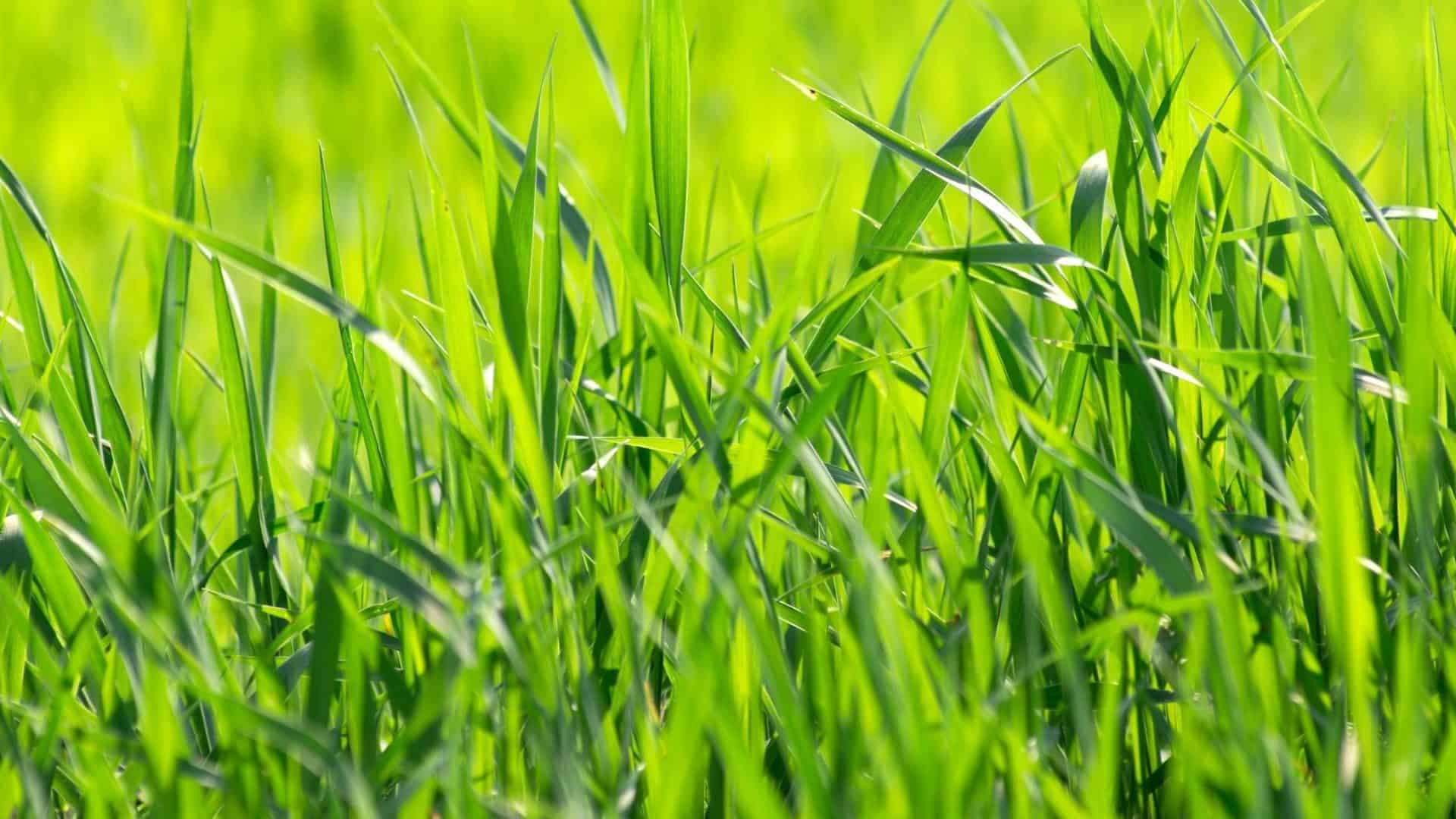

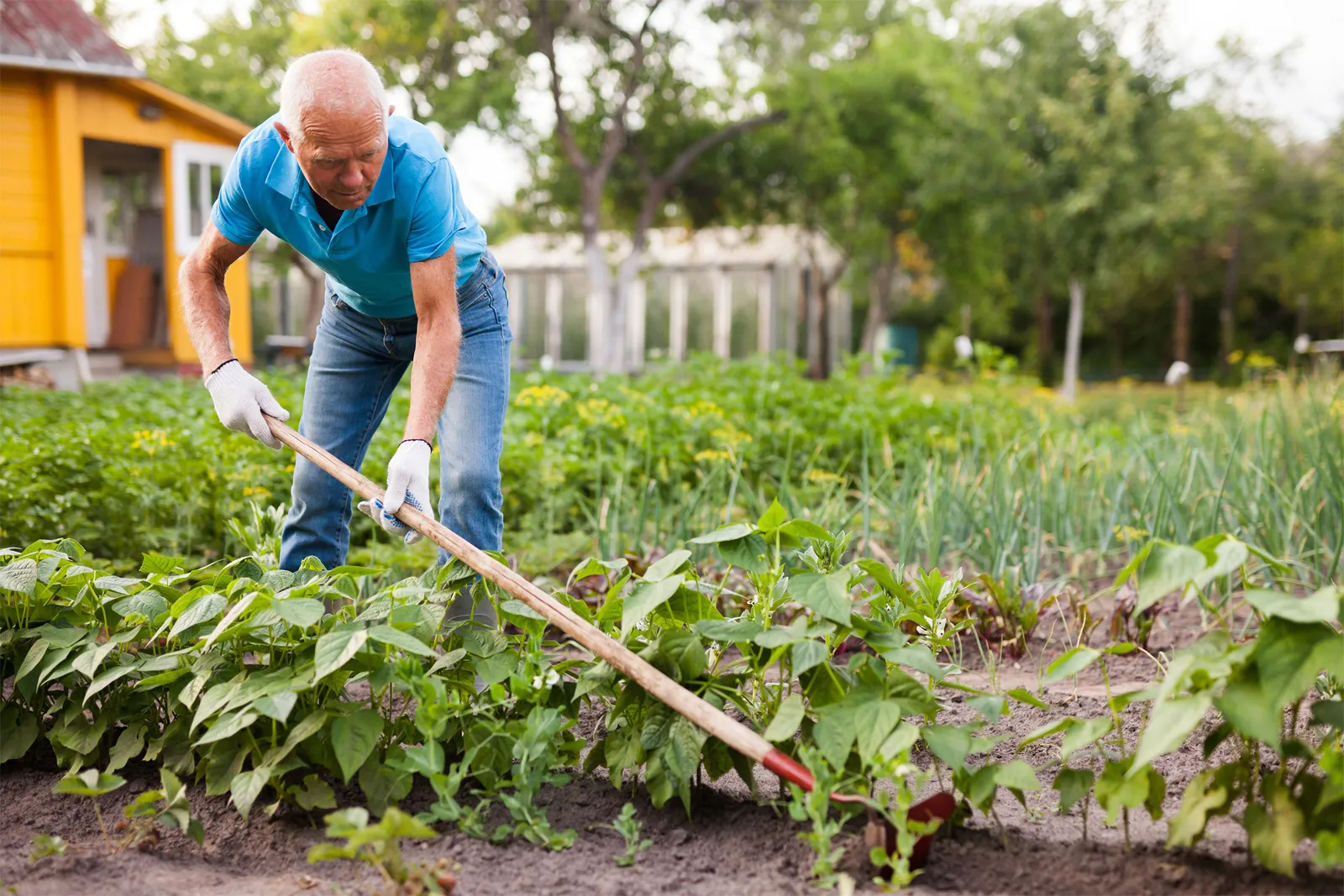

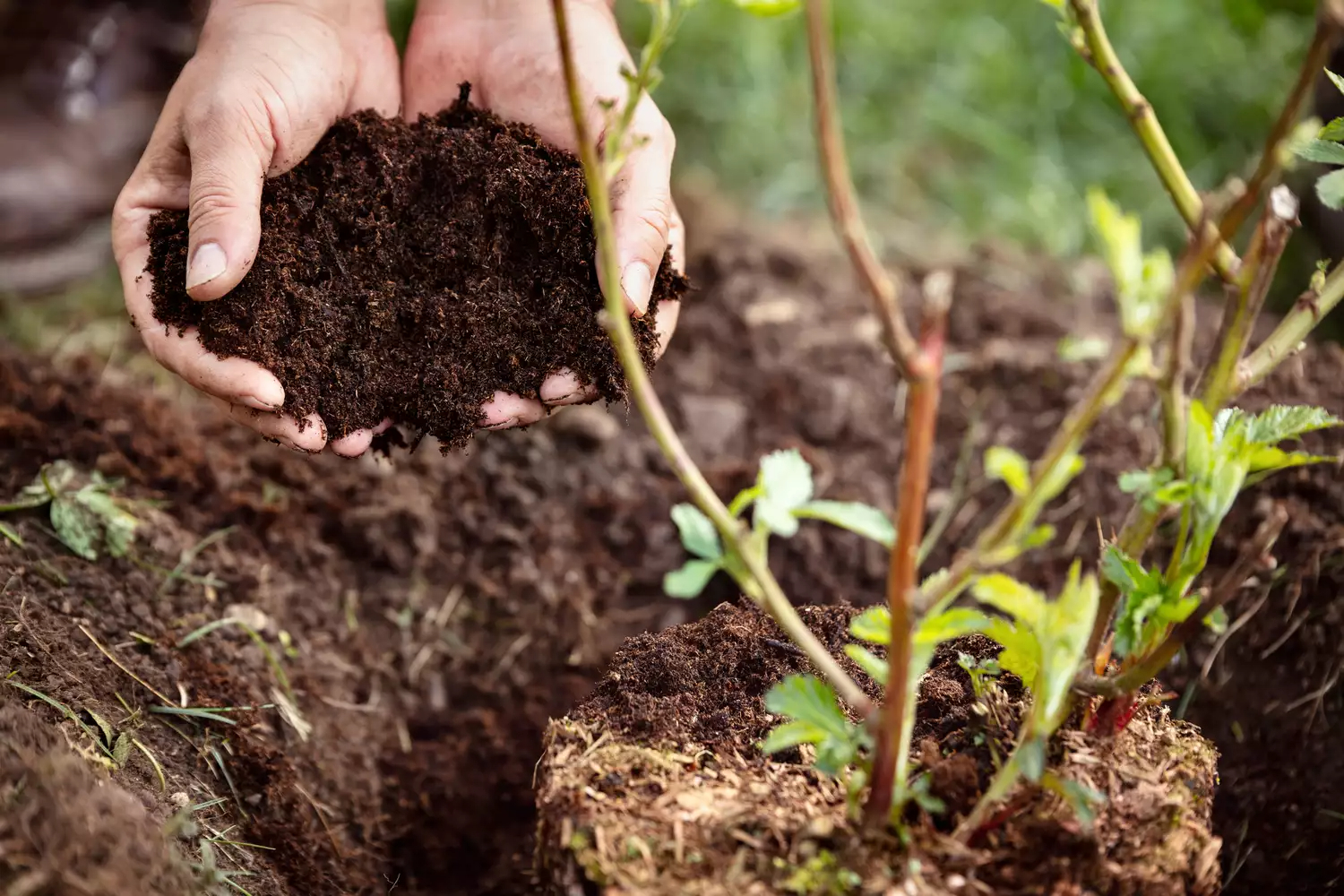
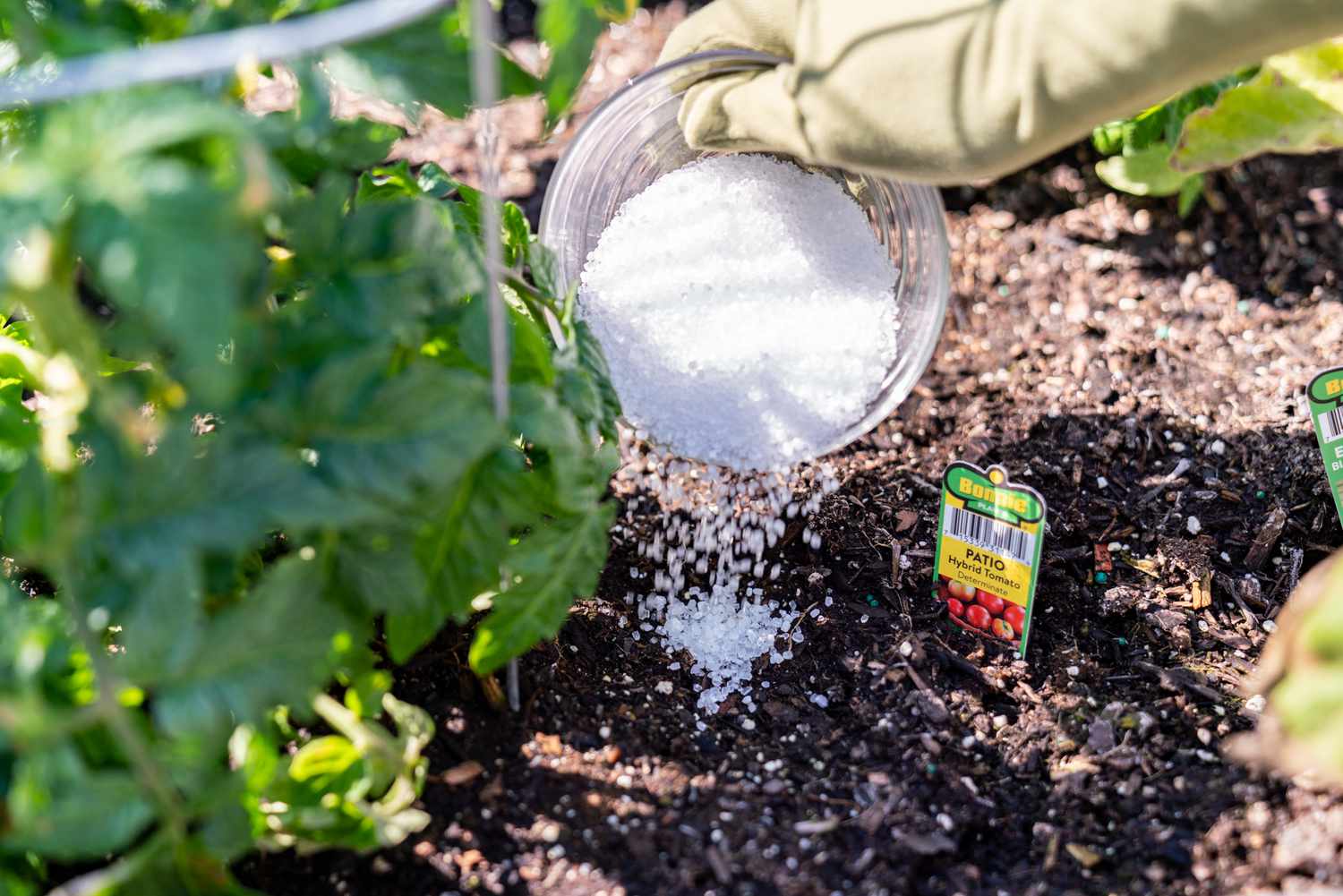

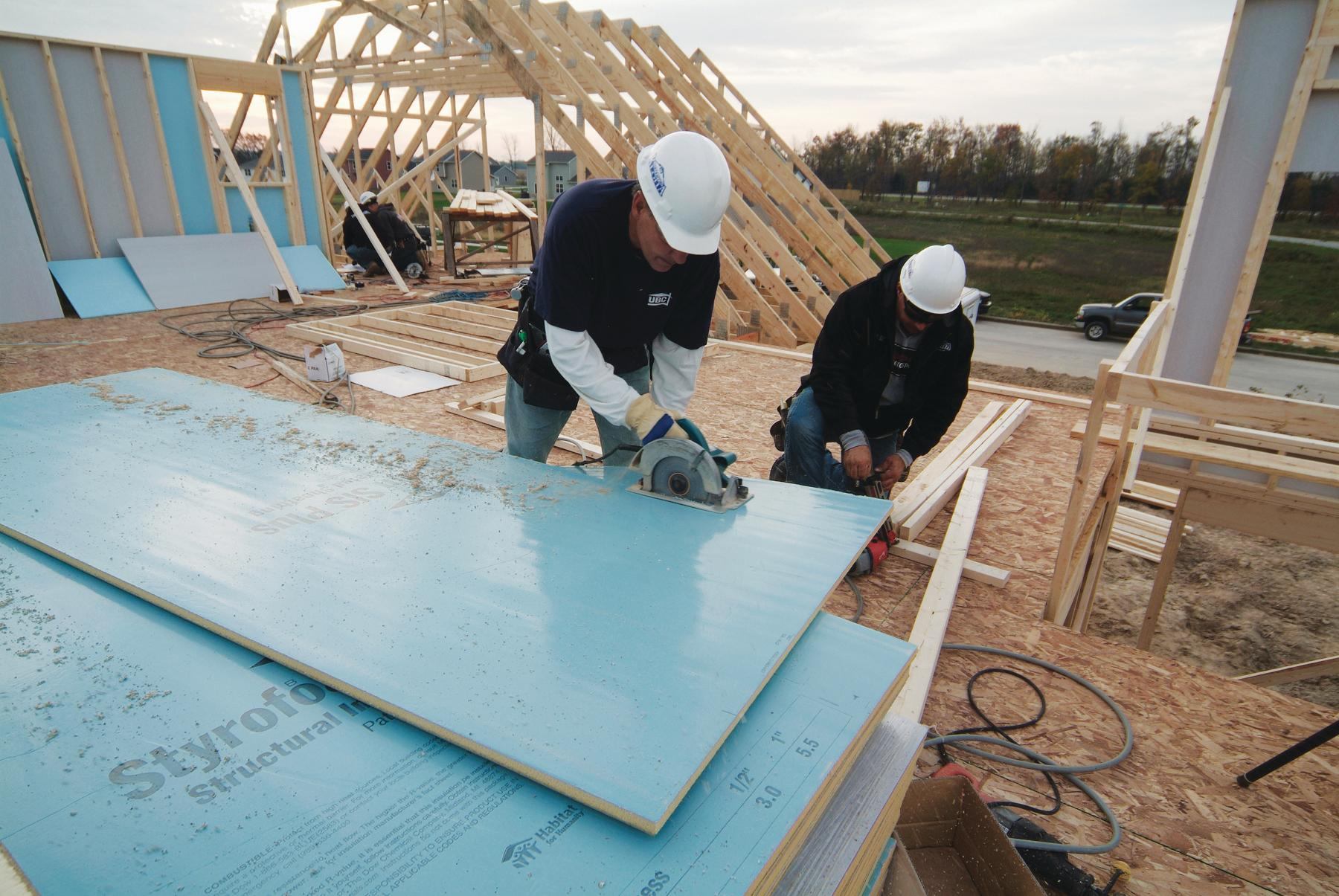





0 thoughts on “How Green Space Is Used”